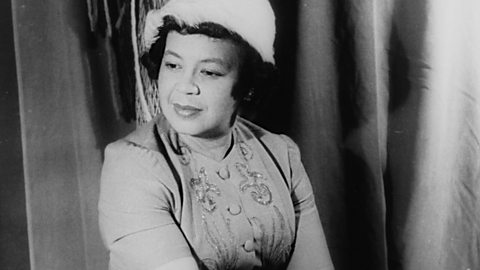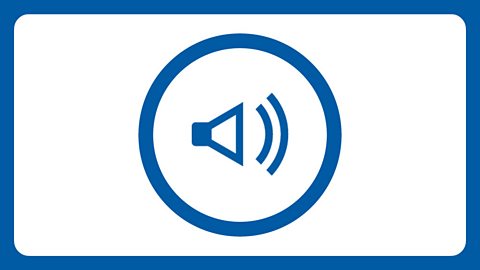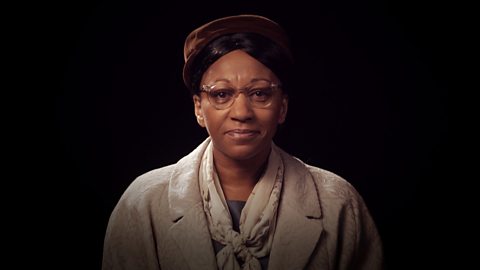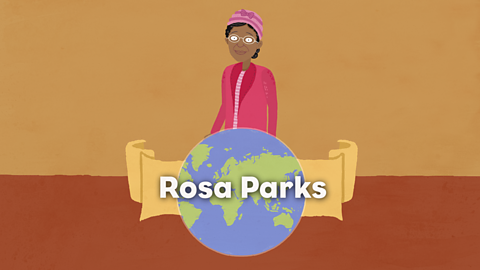Dates: b. 1913 / d. 1972
Nationality: American
Period: 20th Century
Genre: Variations
Key musical elements:
- Duration

About Margaret Bonds
- Margaret Bonds was encouraged to study music from a young age.
- Her mother was a church musician, and her father was a doctor and writer, known for being active in the civil rights movement.
- She won scholarships as a child to study the piano and composition, and took lessons in composition from Florence Price.
- In 1933, at just 20 years old, she became the first Black soloist to perform with the Chicago Symphony Orchestra.
- She was one of the first Black composers and performers to gain recognition in the United States.
- Due to restrictions placed on Black women in copyrighting and recording work, most of her music was thought to be lost. Thankfully, in 2013, several boxes of manuscripts were recovered.
- Margaret Bonds lived in the USA through a time of activism for social justice. As well as her music, she is remembered for her commitment to supporting the careers of Black artists.
About the music
- Margaret Bonds wrote the Montgomery Variations in response to the Montgomery Bus Boycott, a huge protest brought about by the brave actions of Rosa Parks who refused to give up her seat to a white person on a segregated bus in Alabama, USA.
- The main theme comes from an African-American spiritual, a type of religious folk music.
- There are seven variations. These resources focuses on two variations: March and Dawn.
- As part of the boycott, members of the Black community walked to work rather than take the buses. The mass movement on foot is captured in the movement March.
- The movement Dawn refers to several of the southern States in America, including Alabama, realising that a changes in society were coming.
- Each variation is highly contrasting. March is proud, angry, and strong. Dawn is hopeful and optimistic.
Listen out for
- How the composer makes the listener feel as if they are part of the march by keeping the music at a steady walking pace and maintaining a constant beat.
- The way the melody is passed between between instruments as the March takes place, first bassoons then cellos, violins and coranglais.
- In Dawn listen out for the woodwind playing the melody and how the sound swells around the orchestra, like the sun rising or birds in a dawn chorus - reflecting a community waking up to the change they have helped to make happen.
Watch the films
Molly Rainford introduces two different movements from Margaret Bond's Montgomery Variations inspired by the protests in the city sparked by Rosa Parks during the Civil Rights movement of the 1950s
Molly:
Can you hear the footsteps? Who could be marching and why?
Rules are important. They keep us safe, they keep things running. But what if a rule was wrong? Would you do something to change it?
Composer Margaret Bonds was inspired to write this piece of music by a group of people standing up to rules that were unjust, prejudiced, and needed to be changed.
In the 50s, many states across the United States of America had segregation laws. This meant that black people and white people were treated very differently.
It's hard to imagine now, but back then, black and white people were not allowed to eat together in a restaurant, sit together in a cinema, or sit on the same part of a bus.
Black people had to sit at the back whilst white people were given better seats at the front. If the white section was full, black passengers had to give up their seats.
This prejudiced treatment of black people led to a huge protest in the city of Montgomery in Alabama, and the actions of those people went on to change laws across America.
It was this historic event that inspired Margaret Bonds to compose The Montgomery Variations.
The Montgomery Bus Boycott began in December 1955, when a lady called Rosa Parks was arrested and fined for refusing to give up her bus seat to a white man. This act of defiance set the wheels turning - the wheels of change!
People across Montgomery began boycotting the buses in protest. They took to the streets, and they marched, shared car journeys or even taxis, rather than travelling by bus. In fact, so many people stopped using the buses, that they almost put the bus companies out of business.
In December 1956, the US Supreme Court finally ordered Montgomery to allow black and white people sit together on the buses. This huge change didn't just affect the people of Alabama, but the whole of the United States.
Margaret Bonds was a composer at the time of the bus boycott. She often wrote music combining classical music with folk tunes and African American spirituals that she'd grown up with. The Montgomery Variations are based on a spiritual theme called “I Want Jesus to Walk with Me".
Margaret Bonds used the melody from this song in lots of different ways, or variations, throughout the seven sections of the piece. Each movement tells part of the story.
Can you hear how she uses the music to show the strength and the anger of the people? But also, the hope and pride?
40,000 people boycotted the buses on the first day of the protest in Montgomery.
In this movement called March, Margaret Bonds represents the boycott with the timpani and double basses playing the same notes together in unison.
It sounds like thousands of feet pounding the streets together. The music draws us into the crowd as though we are marching with the people. It's almost impossible to keep your feet still.
The melody is passed between the instruments of the orchestra. First bassoons, then cellos, violins and cor anglais. The melody builds in strength each time, just like the community of Montgomery. Single voices joining together as one.
The next movement has a very different mood. It's hopeful, like an early morning - dawn, new beginnings, and the feeling of change.
Margaret Bonds has been inspired by the same spiritual melodies in the March, but she's written it very differently this time. Can you hear the woodwind playing the melody? The music swells around the orchestra, like the sun rising or birds in a dawn chorus, reflecting a community waking up to the change they've helped to make happen.
Margaret Bonds was inspired by the people who marched. The people who marched were inspired by Rosa Parks. And Rosa Parks was inspired by her belief in what was right, and that changed the world.
Gwyliwch y perfformiad o March and Dawn o Montgomery Variations, yn cael i berfformio gan y Cerddorfa Cyngerdd y BBC, a’u harwain gan Ellie Slorach
Classroom resources
Lesson plan (KS2/2nd level/Progression Step 3)
Download the lesson plan for four weeks of learning and activities for Montgomery Variations (PDF)

Powerpoint slides (KS2/2nd Level/Progression Step 3)
Download the Powerpoint slides for four weeks of learning and activities for Montgomery Variations (PPT)

Listen to the audio
Listen to the BBC Concert Orchestra perform 'March' and 'Dawn' from Montgomery Variations, conducted by Ellie Slorach (mp3)

KS3 / Third and Fourth Level, S1-3 Independent Lesson Worksheet
Download this worksheet for secondary level cover lesson activity to be completed alongside the intro and performance films - Montgomery Variations (PDF)

Upload and showcase your creative responses
Upload your creative responses to the BBC Ten Pieces Showcase

Learn more about Rosa Parks on BBC Teach
Rosa Parks
Watch a dramatisation of Rosa Parks' story

BBC Bitesize: Who was Rosa Parks?
Find out more about Rosa Parks
